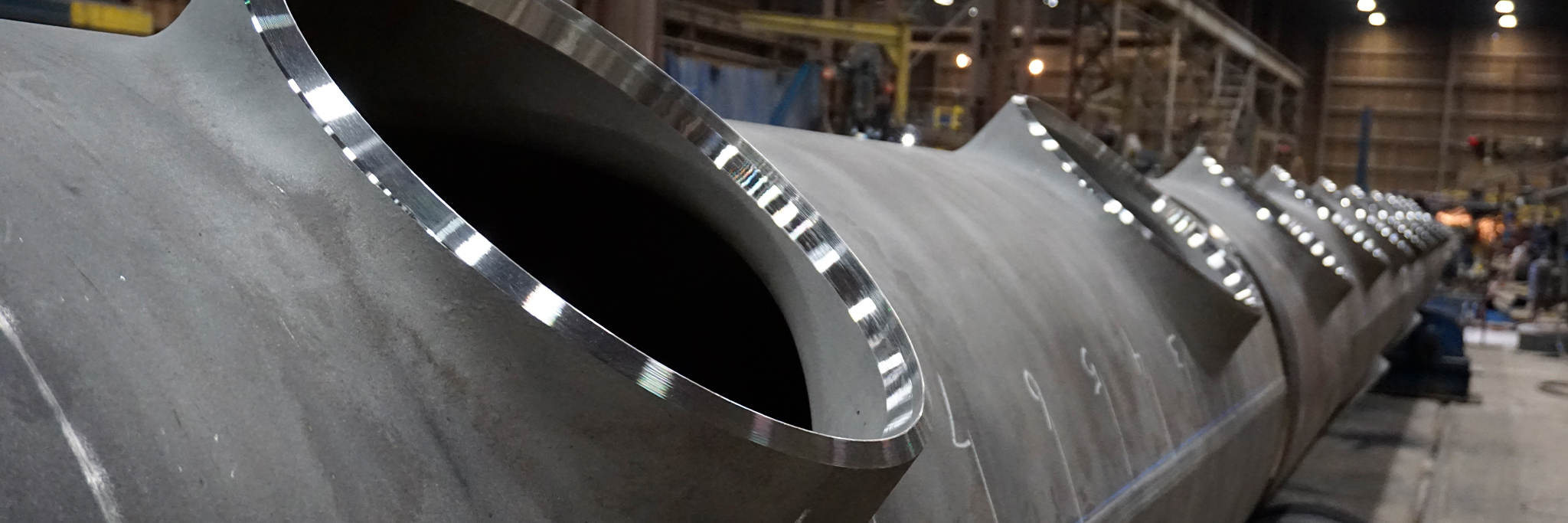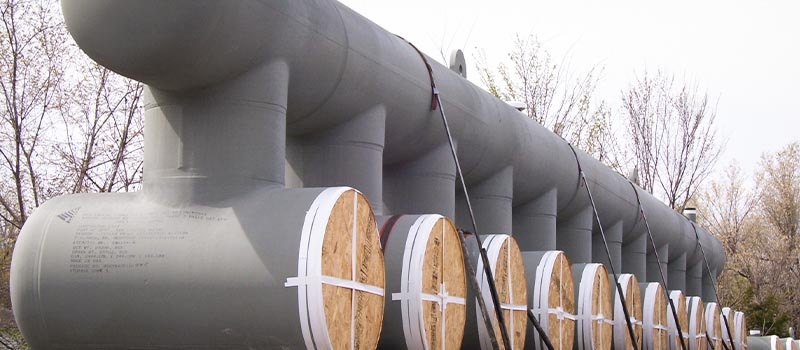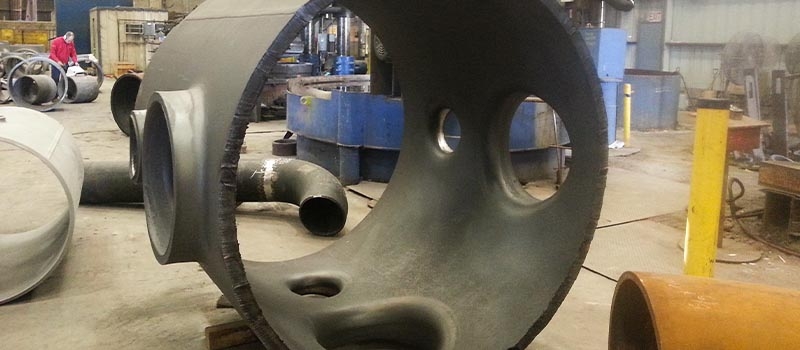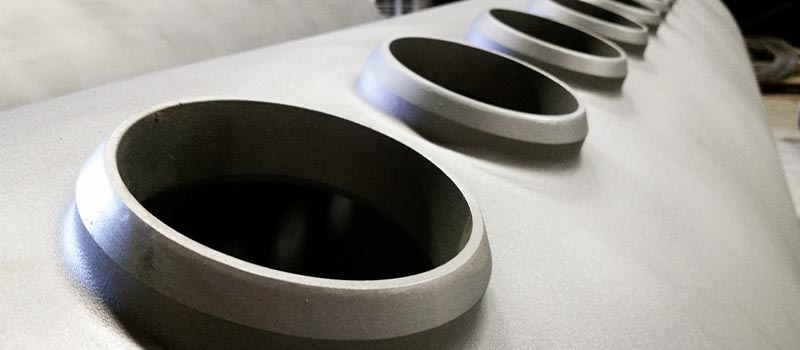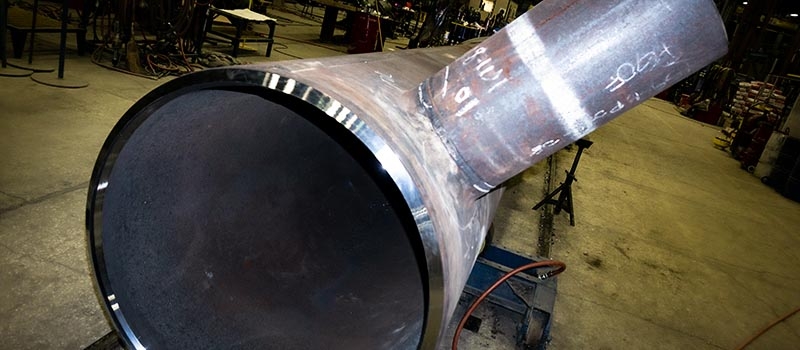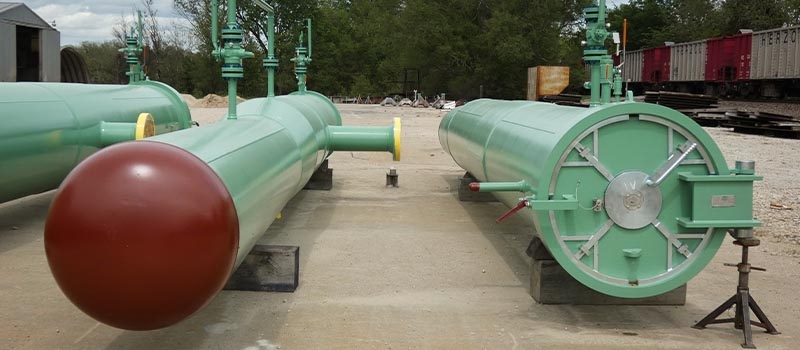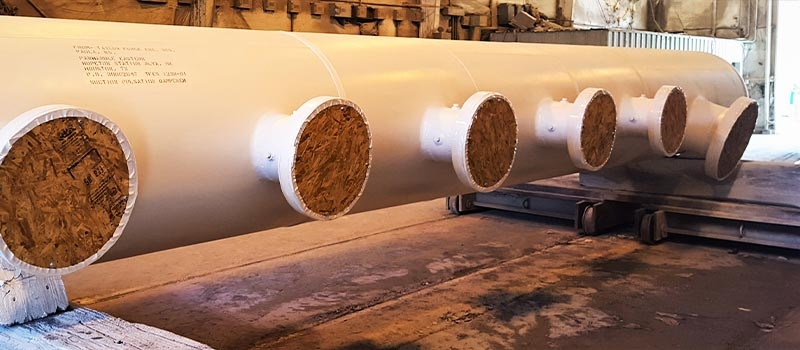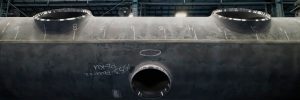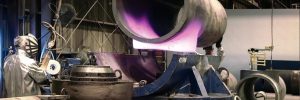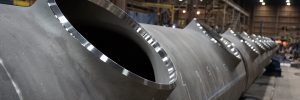Extrusions fill a void where standard fittings are not sufficient. They are versatile in size, spacing, number of outlets, etc. They are made in a way that their outlets are low stress, fatigue resistant construction. Various application benefits below:
- They can include tight center to center spacing, minimizing footprint.
- Flexible to your design and manufacturing code.
- The outlet removes the need for pipe and repad and converts this non-radiographable weld into fully radiographable butt-welded connection.
- The design can minimize the number of girth welds needed with Tee based manifold design.
- Radial or tangential design or both.
Extruded Tee and Header Applications
Extrusions vs. Tees
Extrusions
- Extrusion is a self-reinforced fitting based on conformance with code reinforcement formula.
- Extruded fittings are flexible with no minimum outlet diameter and additional fabrication allowed within reinforcement rules.
- Initially – Proof Testing.
- Code Case 52 to B31.1 (“K” Factor)
- B31.1, B31.3, B31.4, B31.8
- Additional connections can be added to the fitting after installation.
Tees
- Tee wall thickness is based on burst testing data and extrapolation.
- Tees must meet strict dimensional guidelines with one outlet and no other attachments like o-lets, etc.
- Minimum outlet diameter is one pipe size below half of run diameter.
- Can be purchased “off the shelf.”
Extrusion vs. Welding
Extrusions
- Made from a single piece of material
- No welds
- Uniform grain structure
- Resistant to heavy loading and cyclic service
- Limited fabrication required
- Less material than a weld
- No HAZ (heat affected zone)
Welding
- Reinforcement pads are non-radiographable.
- Require greater thickness.
- Create high stress corner joints and exposure to fail in HAZ (heat affected zone).
- More fabrication and material than an extrusion.
- Lower external load factor rating.
- High chance of failure in cyclic service.

